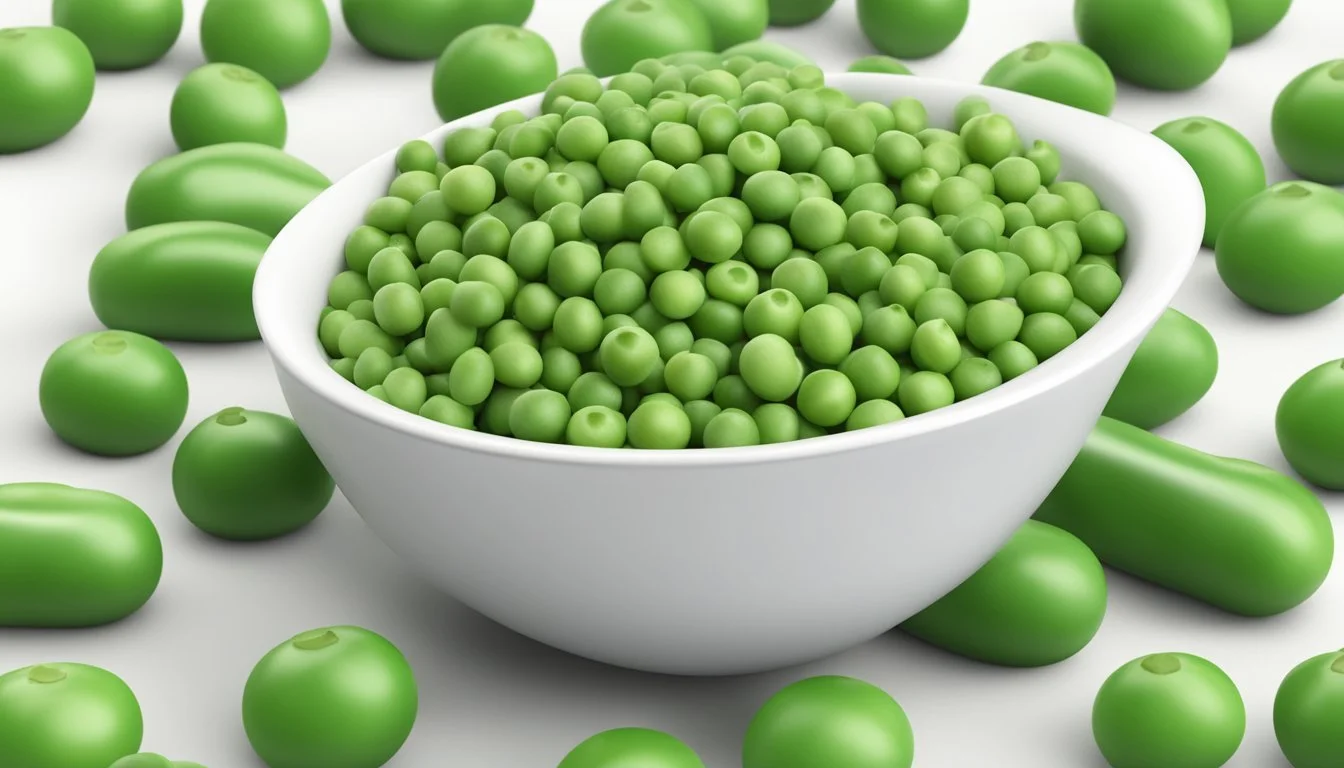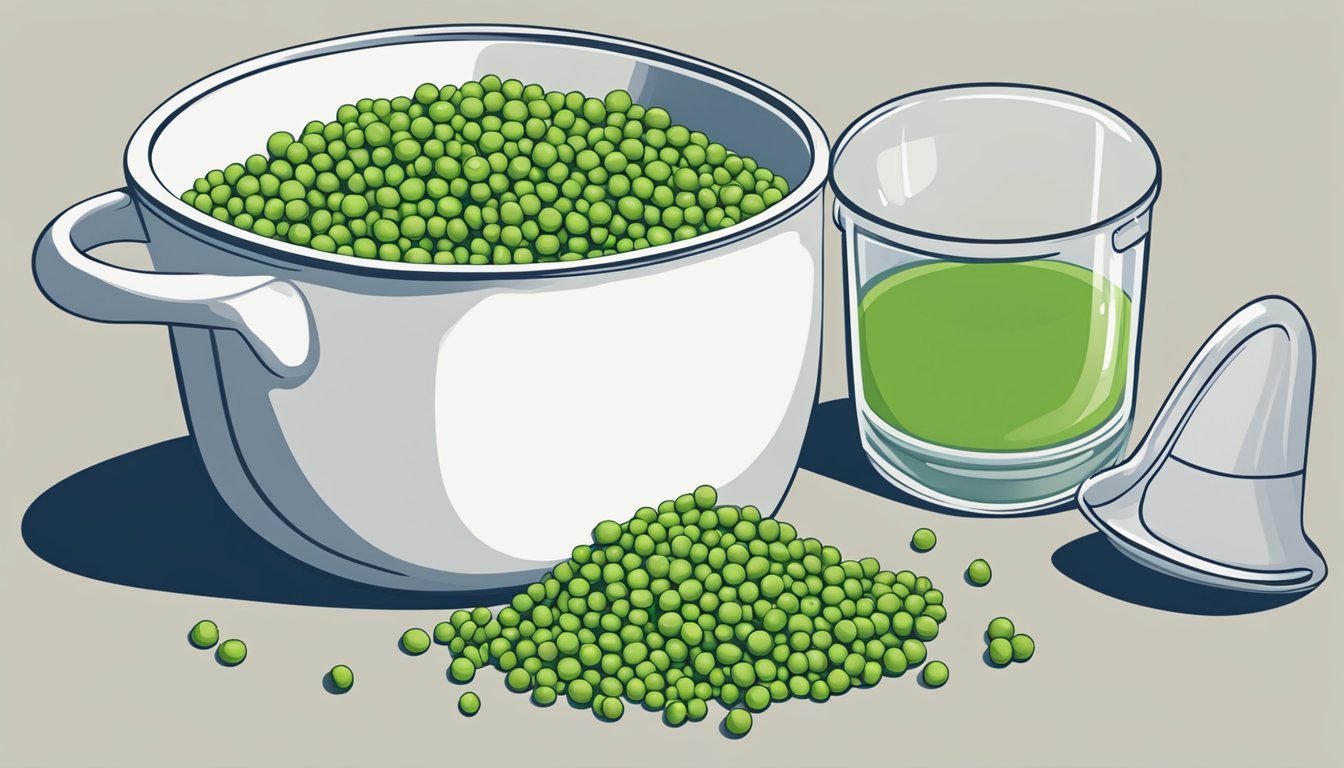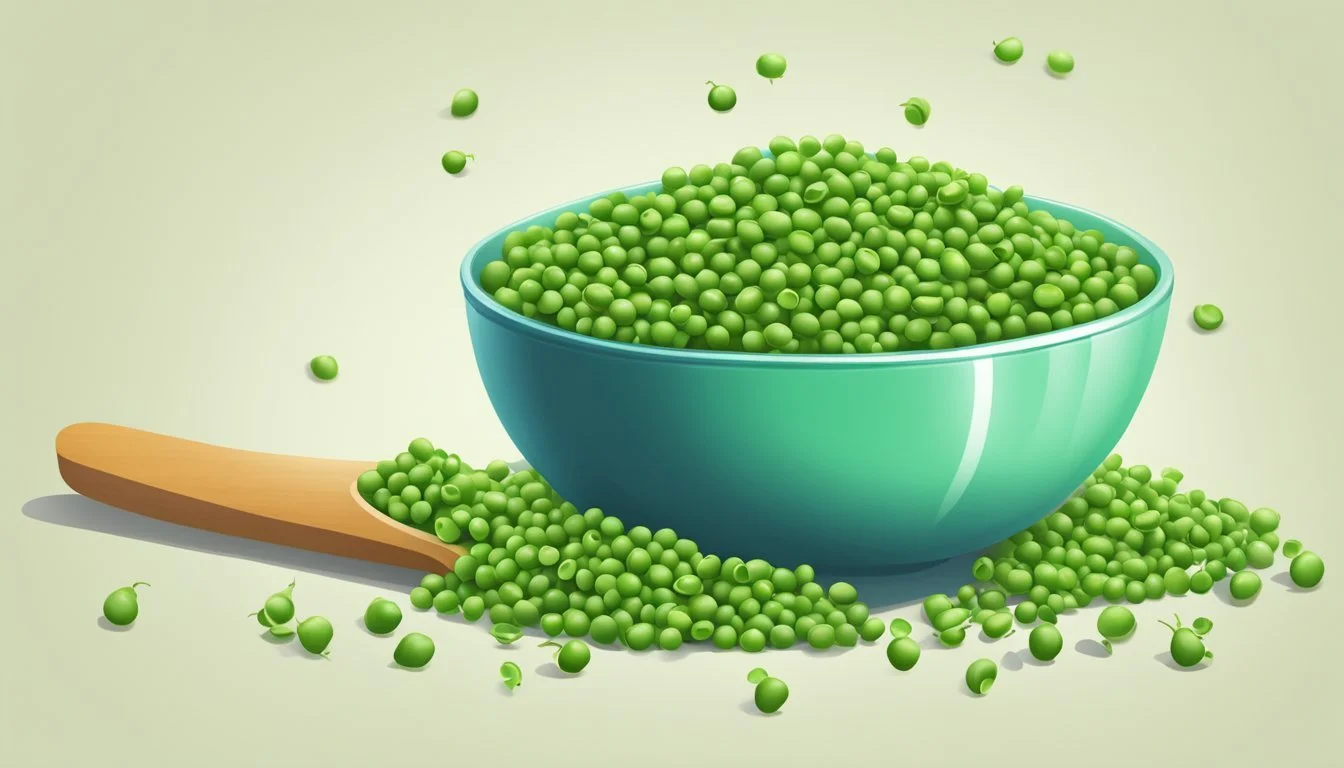How Much Peas Per Day Is Too Much
Understanding Daily Intake Limits
The consumption of peas is generally considered beneficial due to their nutrient-rich profile, which includes a good balance of protein, fiber, and vitamins. Peas are also relatively low in calories, with a half-cup serving containing just 59 calories, making them a nutritious addition to a well-rounded diet. Despite their small size, peas can have a significant impact on health, potentially aiding in digestion, improving blood sugar regulation, and contributing to heart health.
However, like any food, moderation is key when incorporating peas into the diet. It is essential to consider individual dietary needs and health goals when determining the appropriate serving size. While there is no one-size-fits-all answer to the question of how many peas per day is too much, being mindful of portion sizes and the body's response to dietary fiber is crucial.
The balance among nutrients is what makes peas a versatile component of many meals, but they are best consumed as part of an overall varied and balanced diet. Overconsumption of peas, or any singular food, may lead to nutritional imbalances or digestive discomfort, particularly for those with sensitivities to legumes or specific health conditions. Thus, it remains important to listen to one's body and adjust pea intake accordingly.
Nutritional Profile of Peas
Peas offer a rich blend of nutrients encompassing macronutrients, essential vitamins, minerals, and dietary fiber, contributing to their dietary significance.
Macronutrients and Calories
Peas are a notable source of protein, providing about 4 grams per half-cup serving. They are relatively low in calories, with the same serving size yielding approximately 62 calories. This combination makes them a favorable choice for those seeking to balance calorie intake with nutrient density.
Vitamins and Minerals
This legume is an outstanding source of essential vitamins and minerals. Peas contain vitamin K, which is crucial for blood clotting and bone health, as well as vitamin C, vital for the immune system and skin health. In terms of minerals, peas provide iron which is necessary for oxygen transport in the blood, magnesium for muscle and nerve function, and potassium, which aids in maintaining healthy blood pressure levels.
Fiber Content and Digestive Health
Peas are rich in fiber, with around 8.8 grams per cup, bolstering digestive health. The soluble fiber in peas assists in the promotion of healthy cholesterol levels and aids in digestion, making them beneficial for a healthful gut.
Recommended Daily Intake
Determining the amount of peas one should consume daily involves understanding the balance between portion sizes for optimal health and the risks associated with excessive consumption.
Portion Sizes for Optimal Health
A 1/2 cup serving of green peas is a standard measure for consumption. This serving size provides a substantial amount of nutrients, contributing to one's overall daily vegetable intake. For general health, adults should aim to include a variety of vegetables in their diet, amounting to at least five servings per day. Green peas, as part of these servings, offer health benefits such as fiber, vitamins, and protein. For weight management, monitoring portion sizes ensures caloric intake is appropriate for individual dietary needs.
Risks of Excessive Consumption
While green peas are nutritious, they should be consumed in moderation. A balanced diet requires variety. Overconsumption of any single food, including peas, may lead to nutrient imbalances or gastrointestinal discomfort due to excess fiber. It is important to consider one’s total daily caloric and nutrient intake to prevent displacing other vital nutrients. For individuals with specific health conditions, such as those requiring blood-thinning medication, careful attention to the amount of green peas consumed is crucial due to their vitamin K content.
Health Benefits of Peas
Peas offer an array of health benefits, particularly in supporting heart health, managing blood sugar, and providing anti-inflammatory effects due to their rich nutritional profile.
Heart Health and Cholesterol
Green peas can be a heart-healthy addition to one's diet. They are linked with LDL cholesterol reduction; studies indicate that consuming legumes, such as peas, could lower LDL cholesterol levels. Regular inclusion of peas in the diet might contribute to a reduced risk of heart disease by managing cholesterol levels.
Blood Sugar and Diabetes Management
The dietary fiber in peas helps in the management of blood sugar levels, making them favorable for those with or at risk of diabetes. Their low glycemic index prevents sudden spikes in blood sugar, promoting a more stable and regulated blood glucose environment.
Anti-Inflammatory and Antioxidant Effects
Peas have significant anti-inflammatory and antioxidant properties, attributed to the presence of various nutrients and phytonutrients. These compounds can reduce inflammation and combat oxidative stress within the body, offering a protective effect against certain chronic conditions.
Peas in Various Diets
Peas serve as a versatile and nutritious component in various diets, offering plant-based protein to vegetarians and vegans, and complementing the balance sought in a Mediterranean diet.
Incorporating Peas into Vegetarian and Vegan Diets
In a vegetarian or vegan diet, peas are an excellent source of plant-based protein. One cup of peas provides approximately 8 grams of protein, making them a valuable addition for meeting dietary protein needs without relying on animal products. Fiber is also abundant in peas, aiding digestion and providing a sense of fullness, which can be beneficial for weight management. Individuals should be mindful of integrating peas into a well-rounded diet that includes a variety of other protein sources, such as beans, lentils, and whole grains, to ensure all essential amino acids are consumed.
Balancing Peas in a Mediterranean Diet
The Mediterranean diet emphasizes eating primarily plant-based foods and includes a variety of vegetables, whole grains, and legumes. Peas fit well into this diet as a healthy legume option. They can be incorporated into salads, soups, and stews, enhancing dishes with their nutritional benefits, like vitamins, minerals, and additional fiber. When integrating peas into a Mediterranean diet, one should consider the balance of other high-fiber food sources to maintain a diversity of nutrients and avoid potential digestive discomfort from excessive fiber intake. Peas contribute to the dietary variety and nutrient density that this diet is renowned for.
Potential Adverse Effects
Consumption of peas in large quantities can potentially lead to some adverse effects, particularly related to digestion and allergies. While they offer nutritional benefits, it's important to be aware of the possible negative outcomes.
Digestive Concerns and Gas
Peas are rich in fiber, which is beneficial for digestive health. However, excessive intake can result in bloating and digestive discomfort. Individuals with irritable bowel syndrome (IBS) might experience heightened symptoms due to the high fiber content. This is due to the presence of carbohydrates called oligosaccharides, which can be difficult for some people's digestive systems to break down.
Common symptoms of excessive pea consumption include:
Gas
Bloating
Stomach cramps
Allergic Reactions and Intolerances
Although not common, some individuals may have an allergy to peas, which can trigger immune system responses. Allergic reactions can range from mild to severe and may include symptoms like itching, hives, or difficulty breathing. Pea intolerances are different from allergies and may manifest as digestive discomfort rather than an immune response.
Identifying an allergy to peas might include noting symptoms such as:
Skin reactions
Respiratory issues
Gastrointestinal disturbances
Culinary Uses of Peas
Peas are a versatile ingredient in the culinary world, offering a sweet and slightly earthy flavor that can enhance a variety of dishes. They are commonly used in both cold and hot preparations, ranging from fresh salads to hearty stews.
Recipes Featuring Peas
Salads: Fresh or cooked peas can be added to salads for a burst of sweetness and a pop of color. For example, a spring salad with peas, radishes, and a light vinaigrette showcases their bright flavor.
Hummus: For a twist on the traditional recipe, peas can be blended into hummus, imparting a vibrant green hue and a subtle, fresh taste to the spread.
Stew and Soups: Peas are a classic addition to dishes like split pea soup or beef stew, where they offer a tender texture and a comforting flavor.
Falafel: Incorporate peas into falafel mix for a unique variation on this Middle Eastern dish, giving it additional moisture and a distinct taste profile.
Preparation and Cooking Tips
Rinse: Always rinse peas thoroughly before use to remove any dirt or residual pesticides.
Avoid Overcooking: To maintain their vibrant color and prevent them from becoming mushy, cook peas for a short amount of time; usually just a few minutes.
Blanching: For salads, blanching peas quickly in salted boiling water, then immersing them in ice water, can help to preserve their color and crispness.
Sauteing: Peas can be lightly sautéed with butter, garlic, and seasonings to enhance their natural flavor, making a simple yet delicious side dish.
Comparing Peas with Other Legumes
Peas, as part of the legume family, offer unique nutritional benefits compared to other legumes such as chickpeas, lentils, and beans. This section outlines the key nutritional differences and health impacts of peas when compared with these other legumes, and how they are used in diets.
Peas vs. Chickpeas: Nutritional Differences
When comparing peas with chickpeas, it's evident that both legumes are protein-rich, but peas generally have a higher protein content per serving. A cup of cooked green peas contains about 8.6 grams of protein, whereas the same amount of cooked chickpeas has approximately 14.5 grams. Chickpeas are higher in calories and healthy fats, making them more energy-dense, while peas have a slight edge in dietary fiber, crucial for digestive health.
Nutrient Peas (per 1 cup cooked) Chickpeas (per 1 cup cooked) Calories 134 269 Protein 8.6g 14.5g Dietary Fiber 8.8g 12.5g Fat 0.4g 4.2g
Peas vs. Lentils: Health Impact
Peas and lentils offer a variety of health benefits due to their high nutrition content. They both are rich in dietary fiber, which can help regulate blood sugar levels and may be beneficial for heart health. Lentils, however, have a higher fiber content, which contributes to a lower glycemic index, making them an outstanding choice for those managing blood sugar levels. Lentils are also a better source of iron compared to peas.
Nutrient Peas (per 1 cup cooked) Lentils (per 1 cup cooked) Calories 134 230 Protein 8.6g 17.9g Dietary Fiber 8.8g 15.6g Iron 2.1mg 6.6mg
Peas vs. Beans: Use in Diet
Beans are a diverse group within the legume family, ranging from kidney beans to black beans, each with varying macro and micronutrient profiles. Generally speaking, beans are an excellent source of protein and fiber. Peas, on the other hand, have a mildly sweet flavor and contain certain antioxidants not as abundant in beans, such as lutein and vitamin C. Due to their distinct flavors and nutritional profiles, peas are often added to dishes like soups and salads for their texture and nutritional boost, whereas beans are more commonly used as a primary protein source in meals.
Nutrient Peas (per 1 cup cooked) Beans (average per 1 cup cooked) Calories 134 ~220 Protein 8.6g ~15g Dietary Fiber 8.8g ~15g Iron 2.1mg ~3.5mg








